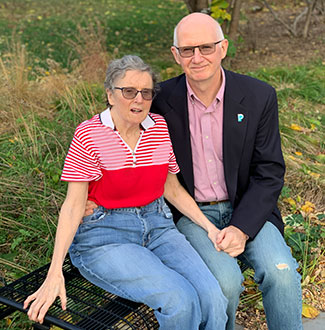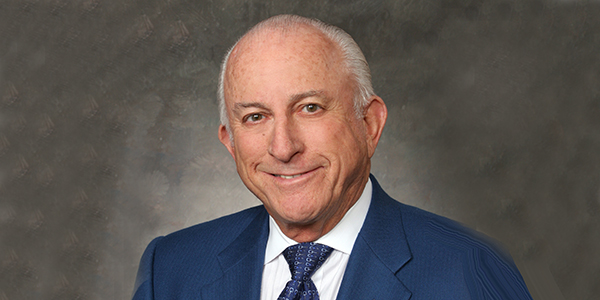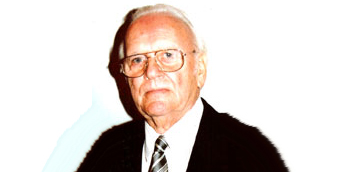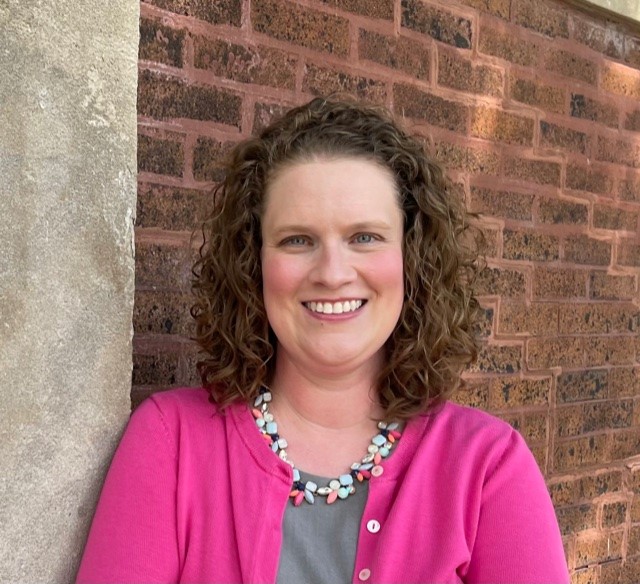Supporters Like You
With supporters like you, we can continue to help make life better for people with Parkinson’s.
Supporters Like You
With supporters like you, we can continue to help make life better for people with Parkinson’s.
Read about supporters like you who are passionate about making a difference for the Parkinson’s community.
Luther Tweeten
“When that cure happens, I want to be a part of it. That is why I’ve named the Parkinson’s Foundation as a beneficiary in my will. It’s a way for me to make the fight against PD a part of my personal legacy.”
Read more of his story
“Most people make a legacy gift to a non-profit for very personal reasons. The same is true for me. Not only did I watch my father battle with Parkinson’s disease (PD), I was diagnosed with Parkinson’s myself.
After my diagnosis, I wanted to understand as much as I could about PD and learn the best ways to make an impact on research. My neurologist pointed me toward the Foundation, saying it was one of the best organizations funding PD research to support.
From expert care, awareness and an emphasis on scientific research, I learned how hard the Parkinson’s Foundation works to improve the lives of people with PD. Thanks to the Parkinson’s Foundation, I have found great occupational and physical therapists through its Centers of Excellence network! I also enjoy reading the Foundation’s research publications to see how scientists, with the support of the Parkinson’s Foundation, are doing all they can to help the PD community.
But most of all, the Parkinson’s Foundation’s emphasis on research gives me hope. Hope that by pioneering PD research, pushing for innovation in scientific discovery and working day in and out with those living with the disease … we will cure Parkinson’s once and for all.
When that cure happens, I want to be a part of it. That is why I’ve named the Parkinson’s Foundation as a beneficiary in my will. It’s a way for me to make the fight against PD a part of my personal legacy –– ensuring I play a role in advancing research and medical science toward a cure, no matter how long it takes.
If you have had a similar journey, you may also want to consider including the Parkinson’s Foundation in your estate planning and joining the Legacy Society. I have hope that, together, we truly will create a world without Parkinson’s disease.”
Tom & Ro Manak
Tom and Rosemary (“Ro”) met as Marquette University chorus members. Forty-five years later, they still sing in a choir, and work together to navigate Parkinson’s.
Read more of their story
Tom and Ro have gone from diagnosis to failed brain surgery, a stroke and now, advanced Parkinson’s. “As the disease progresses it gets more and more difficult,” Tom said. His color-coded calendar helps him keep track of Ro’s appointments, exercise classes and PD Health @ Home events — all of which they attend together. Tom also volunteers with the Parkinson’s Foundation on the People with Parkinson’s Council and the Care Partner Summit committee. “People need to know the Foundation is here for them,” Tom said.
“Leaving a planned gift is the right legacy for us to leave so we can help the people who will need it the most, whether they’re people with Parkinson’s, care partners, families, we know the Foundation will use the donation to advance its mission,” Tom said.
Tom wants to keep helping the Foundation in the future. “For me, leaving a planned gift looks at the Foundation’s vision as a whole,” Tom said. “It’s not just research, education or community involvement. They have so many ways to help the Parkinson’s community and that will spread this donation a long way.” As Parkinson’s Foundation Legacy Society members, Tom and Ro’s dedication to the Parkinson’s community will never be forgotten.


Nancy Novick
When Nancy Novick was diagnosed with Parkinson’s disease (PD) in her 50s, she knew that she wanted to help others facing similar challenges.
Read more of her story
Nancy had been a successful real estate agent in California, and the diagnosis of PD took a toll on her quality of life. She worried about people noticing her tremor and grew self-conscious about her more visible symptoms. Nancy felt depressed and, at times, that she was facing the disease alone. That all changed once she joined a local support group for people with Parkinson’s. Nancy realized that she was not alone and that the Parkinson’s Foundation provided an entire community and a number of resources she could tap into for guidance and support as she faced the daily challenges of living with PD.
“Parkinson’s disease had a profound impact on my sister’s life, and she was determined to give back to the community that helped her. She chose the Parkinson’s Foundation in her estate plan because she truly believed in their mission to make life better for people with Parkinson’s and their families,” said Linda Larkin, Nancy’s sister and the executor of her estate.
Through the support of Nancy and the other members of the Legacy Society, the Parkinson’s Foundation has invested $368 million in Parkinson’s research and clinical care since 1957.
No one should have to face this disease alone, and because of Nancy’s generous contribution to the Parkinson’s Foundation’s mission, she was able to make a difference in the lives of countless others who are suffering from this disease.
Paul F. Oreffice
There is a common perception that people who make planned gifts to an organization can do so thanks to vast wealth that is often inherited.
Read more of his story
This was not my situation. I was born in Venice, Italy, and moved with my family first to Quito, Ecuador, then to the United States. When I arrived here at age 17, I had nothing.
After earning a B.S. in Chemical Engineering from Purdue University, and two years in the Army, I joined The Dow Chemical Company. I held a series of international and management positions before becoming President and CEO of the company in 1978, then Chairman of the Board.
Along the way, I made a decision that would later impact the Parkinson’s Foundation. As I started doing better in life, I created a foundation to support two goals: medical research and patient care. My foundation made donations to many organizations.
Then I met Nathan Slewett, Past President and Chairman of the Board of the Parkinson’s Foundation. And I fell in love with the man and his mission!
As I learned about the Foundation, I saw that it was very worthy of supporting. I found that the Foundation has one of the lowest expense ratios among nonprofits, with an unusually large portion of funds raised going to the mission. That was something I always looked at before contributing to an organization.
Although when I met Mr. Slewett I had never known anyone with Parkinson’s disease, that soon changed as I became increasingly involved. I became a Board member, a member of the Board of Governors, then Chairman of the Board from 2003 to 2007. Over the years, I made significant donations. But as time passed, I found I wanted to use my own foundation to do more to support the Foundation’s unique and important mission.
While most Parkinson’s organizations fund basic research, the Parkinson’s Foundation is unique in doing as much as possible to be of real help to patients and families. I emphasize again the families. One of the tough aspects of Parkinson’s disease is the challenges it presents for the family. Having a person with Parkinson’s in the family can change everyone’s life. Parkinson’s Foundation Centers of Excellence in universities throughout the world are researching how to best address the urgent needs of Parkinson’s patients and their families. We need to give these Centers money for more research, so more scientists can work on the problems of Parkinson’s.
The idea of making a planned gift incubated within me for quite a while. I liked knowing that, upon my demise, my money would go to causes I care about, and to organizations where I know the money will be well-spent. A lot of nonprofits spend a huge portion of money on self-aggrandizement. The Parkinson’s Foundation puts almost all funds directly toward the mission. I researched carefully to make sure my planned gift would be carried out properly.
I decided to deed 25 percent of my foundation to the Parkinson’s Foundation. Once I made the decision, the legal arrangements were easy to work out with my attorney. In fact, the actual task took minutes. By making a planned gift, I became a proud member of the Parkinson’s Foundation Legacy Society.
The decision makes me feel great. The money I’ve earned throughout my life is going to do something good that matters to me. It is deeply satisfying to know that even when I pass away, I will be improving the lives of people with Parkinson’s.
In coming to my decision, I spoke with my family. They were all very supportive. My daughter said, “Dad, you made this money. So it should go to what’s important to you.”
Many people think they don’t have the resources to make a planned gift, but in fact, they do. If you are considering making such a gift, there is nothing to be gained by delay. We are all mortal. Don’t let it happen that you pass away before your wishes are known and many thousands of people are helped through your generosity.
My great wish is for others to follow my example and create a legacy that is meaningful because of what it is used to accomplish. There is no greater satisfaction.

“Many people think they don’t have the resources to make a planned gift, but in fact, they do. If you are considering making such a gift, there is nothing to be gained by delay.“
-Paul F. Oreffice

Robert A.M. Coppenrath
As an avid mystery fan and accomplished author in his own right, Robert A. M. Coppenrath can’t wait to start reading the final chapter about the long quest to find a cause and cure for Parkinson’s disease.
Read more of his story
Coppenrath predicts that during his lifetime, medical researchers will identify and disarm many of the intricate and elusive villains that cause Parkinson’s. “Absolutely, we will see it!”
But solving these medical mysteries depends on the continued generosity of public and private funding for state-of-the-art research that is closing in on a cure, he adds.
Coppenrath, is an internationally known business executive with Agfa-Gevaert, Inc., and an adjunct professor of graduate leadership studies at Ramapo State College. He has authored nine books and is an accomplished artist as well as a prolific reader.
Coppenrath also makes time to act as a generous supporter of the Parkinson’s Foundation, an allegiance that spans half a century. “Parkinson’s is such a dreadful disease,” Coppenrath says. “We really need to get more and more information about this disease out to the general public.”
Coppenrath first learned about the Parkinson’s Foundation some 50 years ago, as a friend and business associate of Dr. Charles Glasser, the son of founder Jeanne Levey. Mrs. Levey’s husband, Jay, died from Parkinson’s in 1964 after a grueling 18-year struggle.
Coppenrath’s support of the Parkinson’s Foundation grew through the years thanks to his long friendship with Nathan Slewett, Chairman Emeritus of the board, whom Coppenrath praises as “the key to what the Foundation is today” and the “driving force behind our Board of Governors.”
In his support for the foundation, Coppenrath serves as an ambassador and an honorary member of the Board of Governors and contributes financially. He has donated several of his original paintings and also established a legacy in his will, ensuring that research into the best treatments for people living with Parkinson’s disease will continue beyond his lifetime.
Phyllis Sockwell
Phyllis Sockwell was an advocate her entire life. She worked to better the public school system of her Chapel Hill-Carrboro area. When diagnosed with Parkinson’s disease (PD) she began her last quest to support a new kind of education – Parkinson’s research.
Read more of her story
Throughout her life, Phyllis donated more than $200,000 to fund Parkinson’s research at her local level, namely at the University of North Carolina at Chapel Hill Medical Foundation, a Parkinson’s Foundation Center of Excellence where she received expert PD care.
“She lived to the age of 87, which is surely a result of her efforts to remain mentally and physically active,” said Susan Sockwell Bendlin, Phyllis’s daughter.
Phyllis lived with Parkinson’s for more than 20 years, consistently supporting her passion for PD research and public education. In 2013, when she was recognized as a “Town Treasure” Phyllis said, “I care about people…I care about making things better for others.”
Phyllis’s memory lives on. “Per my mother’s request, her brain was immediately donated in her effort to support of Parkinson’s research.” Phyllis also wanted to leave a legacy, so she left a 401(k) donation to the Foundation.
Phyllis will be remembered as a Parkinson’s advocate and now, as a Parkinson’s Foundation Legacy Society member. “I hope her monetary gift will help researchers find life-changing solutions to Parkinson’s,” Susan said.

“I care about people…I care about making things better for others.”
-Phyllis Sockwell
We’d Love to Hear Your Story
What can you share with those that have been affected by Parkinson’s that will help them keep moving forward? Please share with us how your life has been affected by Parkinson’s (as someone with the disease, a caregiver or a family member).
Join a Giving Society
Together we can do so much. Join a community of people who share your passion for advancing Parkinson’s research and improving care by becoming a member of one of our giving societies.
I'm here to help

Kate Nelson
Associate Vice President, Individual Giving
Parkinson's Foundation
Legacy@Parkinson.org
312-794-7254
